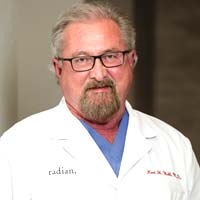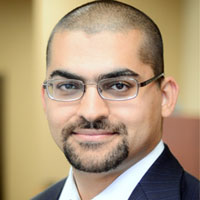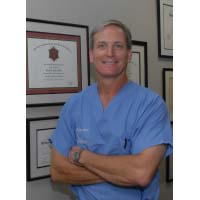Hair Transplant Procedures Made Better with Simple Innovations
Technological advancements and breakthroughs in research related to
hair transplants have made the process more affordable besides making it
more and more successful.
Hair restoration is a field which is
in continuous upgrade mode as a large population is waiting for an
affordable remedy which will help regain hair, self-confidence and
success in life. Research in enhancing the survival rates of
transplanted hair grafts has been successful with the development of
highly sophisticated equipment.
Dr. Sean Behnam of Santa Monica Hair
Transplant has made innovative changes to normal equipment and processes
to enhance his services.
Hair restoration has always faced the
hindrance of external factors like heat and other environmental reasons
which tend to damage hair grafts reducing their survival capacity. The
damage usually occurs in the time between harvest and transplant on the
scalp.
Greater survival rates will now ensure the successful
transplant of healthy hair grafts which will grow to healthy hair and
give more value for the patient’s money. Graft survival depends on
beating the effects of heat or high temperatures. For this purpose a
simple lighting solution is needed which uses LED lights. LED does not
emit so much heat like ordinary lights.
Microscopes using LED
lights customized for the purpose have rectified the problem of
overheating the grafts and controlling the temperature of the surgical
environment. The medical exam light used to light the recipient surface
on the scalp is also fitted with LED light which again controls the
heat.
Between harvest and transplant of hair grafts, the hair is
kept in petri dish coolers with ice whose temperature needs to be kept
optimum. The new cooler is designed to maintain the temperature at 2-3
oC. This ensures that more hair remains healthy and viable and will grow
to form healthy hair.
Another innovation which optimizes the
entire hair transplant process is a temporary surgical tape which helps
to control swelling of the face and hence reduces patient downtime.
Better methods of cleaning also ensure graft survival.
Other
advancements made by the clinic include a massager and vibration
technique which reduces discomfort for the patient undergoing the
transplant. New methods have been incorporated at each level to prevent
bruising, prevent ingrown hair after FUE procedure is done and so on.
All these innovations optimize the procedure and make it cost effective
for patients.
Last but not the least the clinic emphasizes on
personal and sincere care. The surgeon performs the hair transplant
procedure on only one patient in a day in order to maintain focus and
derive maximum satisfaction for himself and for the patient, ensuring
100 percent success rates.
Hairfear
Frequently asked questions about hair transplant procedures
How much does a hair transplant cost?
Hair transplants can vary in price based off of the area in the world that you are interested in getting a hair transplant as well as the size of the area where you may need a hair transplant. Experienced doctors in the United States will often charge some of the highest prices for a hair transplant worldwide and this is why so many travelers make the move to other parts the world like Turkey, India, Thailand, Mexico...etc for their hair transplants.
Will a hair transplant hurt?
Although hair transplants may look like a particularly
unpleasant or painful experience is actually very little discomfort involved
with the surgery itself. Hair transplants are always done under an anesthetic so there's absolutely zero pain during the treatment itself. Many people actually relate the process as being very similar to going to the dentist for filling or root canal. Mild pain can persist over the course of postop treatment but he generally just resumes for a few days.
Who can deliver the best surgery?
It's usually best to consider working with surgeons who have and IAHRS certification or international alliance of hair restoration surgeons recognition. IAHRS can often deliver recommendations for the best surgeons in each particular area.
Is this scarring noticeable?
Any type of hair transplant will require the use of incisions throughout the scalp. There can also sometimes be a small scar from the donor area towards the back of the scalp. Asking to look at photos of the surgeon's previous work will help you to see roughly how bad the scarring could be. In most cases an experienced professional can limit the look of scarring and noticeable marks from the surgery.
How long does it take for the hair to grow?
In most cases hair growth will start within eight months and you can start to see a full effect from the hair transplant after a full year. The initial signs of growth can usually start between 3 to 4 months after the surgery.
Are the results permanent?
The hair follicles that are transplanted are generally the ones which are genetically resistant against the symptoms of baldness. As long as you receive hair loss treatment later in your life after the symptoms of balding have started to subside, you can have a better chance at permanent results.
While everyone know you've had surgery?
If you want to limit the chance that people may find out about your surgery it's important to give at least three weeks of healing as the surgical area will be affected and red just after surgery. After around a month of healing it can look far less noticeable. You could consider wearing a hat while time passes or opting for some extra time off if possible.
How long should I rest after surgery?
It's recommended to rest for at least a few days after surgery so that your body can recover. Trenton to over exert yourself and limit sexual activity, running in the gym for around 10 days after surgery.
Is it possible to lose more hair as a result of surgery?
There is always a chance of shock loss which happens when the hair is weak and miniaturizing after the surgery. As long as the surgeon is choosing the correct hair follicles and performing the surgery well it's possible to minimize the chance of this happening however.
Will I need another hair transplant?
The need for another transplant really depends on the individual. With a solid foundation surgery and working to potentially bolster results with drug therapy, you can improve the stability of the hair that was transplanted as well as prevent further loss. Getting a hair transplant early
on in your 20s or early on in life could lead to needing long-term transplants as hair loss can be progressive.







